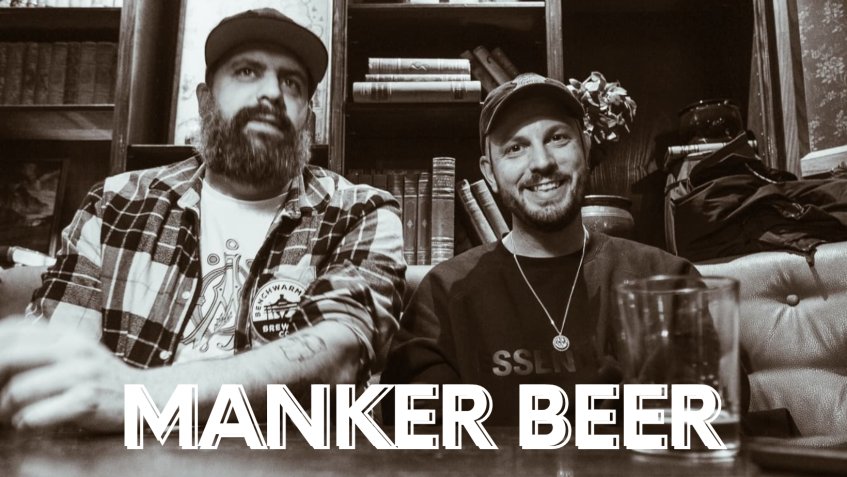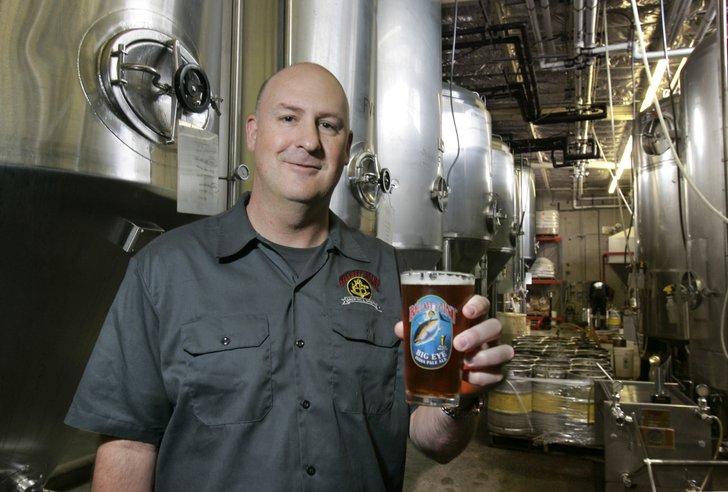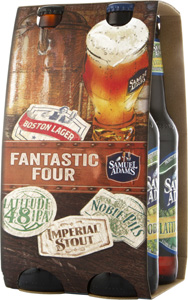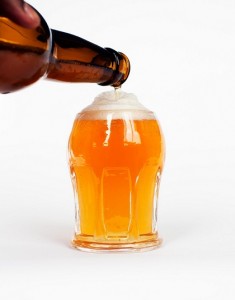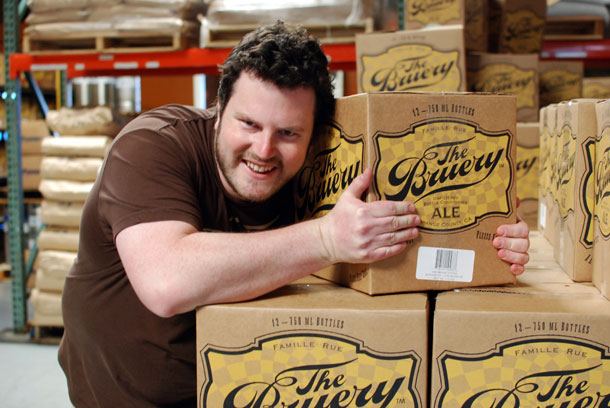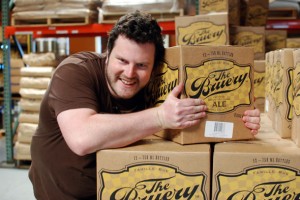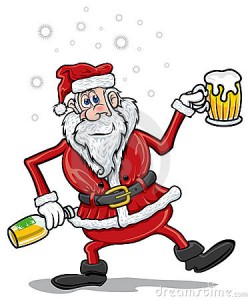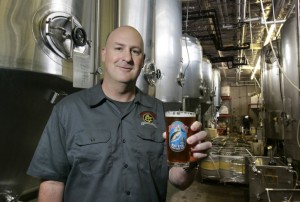 The time has come for our first clash of the pre-series, where the interviewee will attend both our primary focus, Great American Beer Festival but this time also Stockholm Beer and Whisky Festival. Sweden and the Northern European market is gaining in importance for stateside breweries who slowly seem to understand the perks of exporting (the importer takes care of most of the business, no distributors, three-tier-systems or sales reps being sent out across the country. Just so happened to be the brewery and the co-founder which I will present today is from one of my favorite US craft breweries – Ballast Point Brewing Company. Jack White and co-founder Yuseff Cherney and their team are the reason why we have world class beers such as Sculpin IPA, Dorado DIPA and my latest love the imperial porter Victory at Sea. I remember my first Sculpin and the story that went with it, because back then (this might be 3-4 years ago) it was rare to find hoppy American beers in Sweden and when the beer had been transferred to my inner sanctum I knew that I wanted more. Over the years things have changed and a beer that once seemed impossible to find suddenly appeared at Roberta’s Pizza in Brooklyn, on draft for only a few bucks per plastic mug. Instant happiness. Two years later we will find Sculpin at Systembolaget (having monopoly and ruler of alcohol in Sweden) which is final proof that things are happening, not only in Sweden and the Nordic countries, but on the international beer scene.
The time has come for our first clash of the pre-series, where the interviewee will attend both our primary focus, Great American Beer Festival but this time also Stockholm Beer and Whisky Festival. Sweden and the Northern European market is gaining in importance for stateside breweries who slowly seem to understand the perks of exporting (the importer takes care of most of the business, no distributors, three-tier-systems or sales reps being sent out across the country. Just so happened to be the brewery and the co-founder which I will present today is from one of my favorite US craft breweries – Ballast Point Brewing Company. Jack White and co-founder Yuseff Cherney and their team are the reason why we have world class beers such as Sculpin IPA, Dorado DIPA and my latest love the imperial porter Victory at Sea. I remember my first Sculpin and the story that went with it, because back then (this might be 3-4 years ago) it was rare to find hoppy American beers in Sweden and when the beer had been transferred to my inner sanctum I knew that I wanted more. Over the years things have changed and a beer that once seemed impossible to find suddenly appeared at Roberta’s Pizza in Brooklyn, on draft for only a few bucks per plastic mug. Instant happiness. Two years later we will find Sculpin at Systembolaget (having monopoly and ruler of alcohol in Sweden) which is final proof that things are happening, not only in Sweden and the Nordic countries, but on the international beer scene.
This introduction focused more on my relationship with Ballast Point and Sculpin rather than Jack or Yuseff, so why not change that by checking in with Jack to see what is happening over in San Diego?
MankerBeer (MB): Along with Yuseff you started Ballast Point in 1996 and since then several Ballast Point beers have won different awards and the beers have found their way to remote places like South Korea and Sweden. What made you want to open your own brewery in the first place?
Jack White (JW): After college, I got into home brewing, and I quickly realized there wasn’t a good place in San Diego to easily get home brew ingredients or share conversions with fellow home brewers. I opened Home Brew Mart in 1992 to offer not only supplies, but a community for fellow home brewers to come and trade ideas. That’s where I met Yuseff, and together we took our home brewing passion to the next level to open Ballast Point.
MB: Ballast Point has been around for over 17 years, what is your take on what has happened with the American craft beer scene since then?
JW: When we started, there were a few other San Diego breweries just starting out, and for a long time, it was just a handful of us. Now there are over 70 craft breweries in San Diego, many of whom started as home brewers like us. I’m glad to see more attention being paid to craft beer; customers seem to want more quality and variety out of their beers, not just what’s coldest or lightest. It’s been great to watch the craft beer community grow around us locally and globally as well.
MB: During the fall of 2013 Victory at Sea, Sculpin and Sea Monster will be sold at the Swedish Systembolaget (monopoly outlet for alcoholic beverages) – How many countries do you export to and how important is exporting beers for the brewery?
JW: We export to 9 countries, from Asia to South America to Europe, and it’s been fun to see the international response to our beer. The craft beer community is still small, even on a global level. We are primarily recognized for a “West Coast-style” of brewing, but we are largely influenced by more traditional brewing techniques from around the world. We’ve had opportunities to collaborate with breweries in the UK and Japan, and those experiences just add to the creativity and innovation we bring to brewing in San Diego.
MB: Earlier this year Ballast Point launched the Homework Series, what can you tell us about it and how limited will be it be?
JW: Homework Series is a way to honor our home brewing roots, and it is the first beer we have bottled under our original Home Brew Mart name. For each “Batch” in the series, we ask one of our brewers to pick a brew from his (or her) home brew recipe book, and we feature that recipe right on the bottle for other home brewers to try themselves. As far as we know, it’s the first instance of a beer’s recipe being printed right on the bottle. We got a great response with Batch #1, a hoppy red ale our Director of R&D/Specialty Brewer Colby Chandler originally brewed for his wedding, and we will release Batch #2, a Belgian-style Double IPA, in limited quantities in October.
MB: What was the idea behind opening a microdestillery? Have you put some BP beers on old casks? Barrel-Aged Three Sheets Rum barrel-aged Sculpin!
JW: The distillery was always a dream of Yuseff’s that we are able to make into a reality. Yuseff built our first still himself out of a fermenter tank turned upside down. Once our spirits starting winning awards, we knew it was time to upgrade–we now have a custom copper Vendome still, and we produce seven spirits: Fugu Vodka, Three Sheets rum (white and barrel-aged), Old Grove Gin, and our Devil’s Share whiskey family: single-malt whiskey, bourbon, and moonshine. Having a brewery and distillery is fun because we get to do some exciting combinations, like barrel aging some of our beers in our own used barrels. “Nine Sheets” is our Three Sheets barley wine aged in our Three Sheets rum barrels – not for the faint of heart!
MB: In 2010 Ballast Point brewed 20.000 barrels with the goal this year to be almost four times that. How do you feel when looking at where you started and the brewery today?
JW: I sometimes joke that it took us 17 years to be an overnight success. We are growing very quickly–and most of that growth has happened over the last few years. It’s humbling to look back at where we started in the back of Home Brew Mart and how far we’ve come, and I’m excited for what we have on the horizon.
MB: With more and more US craft breweries expanding and quadrupling their production over the last few years, are we still to talk about “micro” and “craft”?
JW: “Micro” is an interesting word – it’s all relative. Ballast Point is growing, the craft industry is growing, but it’s all still a fraction of the overall beer market. What is encouraging to me is that people are still opening up “micro” and “nano” breweries; the growth in the industry just allows more room for the small craft producers.
MB: The new canning line seems to be up and running, why the decision to run both a canning and a bottling line?
JW: For us, the decision to produce cans came down to the ability to ave great beer while doing the things we love to do: we love fishing, hiking, sailing, being outdoors or at sporting events. In most cases, these are areas where bottles are prohibited, and we didn’t want our customers to have their options limited simply because they can’t have bottles in certain places. We have done a lot of quality testing and there is no difference between our beer in cans or our beer in bottles; in some tests, the beer in cans actually performs better.
MB: What are you looking forward to with GABF and how important is the festival for breweries and the American beer scene?
JW: Festivals like these are important because they draw consumers from all over, and also allows us to see what our peers are doing in other parts of the country. I know brewery registration for GABF sold out in a matter of hours, so I’m looking forward to trying some of the new breweries on the scene; it’ll be exciting to see some old friends and many new faces.
MB: Are there anything all GABF-debutants reallly shouldn’t miss and/or think about at GABF?
JW: With the size the festival has become, it’s hard to say what the can’t misses are. Obviously, the Ballast Point booth is a can’t miss!
MB: What cool Ballast Point brews will be poured at the festival?
JW: Sculpin IPA
Grunion Pale Ale
Even Keel Session Ale
Navigator Doppelbock
Longfin Lager
We say thank you to Jack and hope that people try out Ballast Point both at SBWF and GABF this year. We will spend some time with Sculpin later in October and our hope is to give you a great insight into the brewery and the people working there. So long and thank you for all the fish! All you who will be in Sweden for SBWF should mark September 27 in your calender/wall papers as there will be a Ballast Point Tap Take Over and Monks American Bar Sveavägen in Stockholm that day (Facebook event here). Nine (!) different beers on draft, among them beers such as Calico Amber, Black Marlin Porter, Fathom India Pale Lager and Smoked Helles Lager. Miss out and blame yourself. During that weekend Jack will also be at SBWF, so if you see him say hi.
